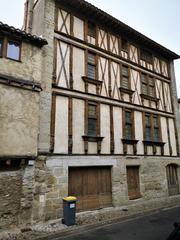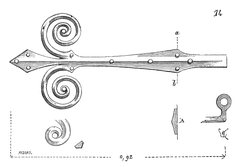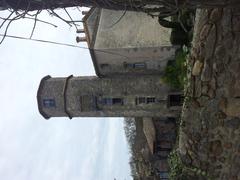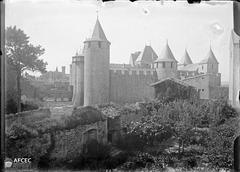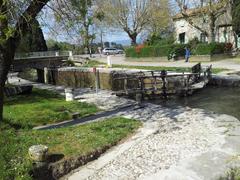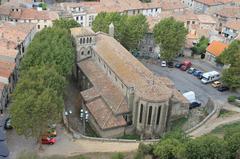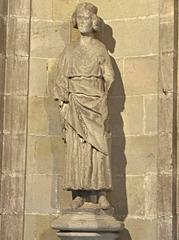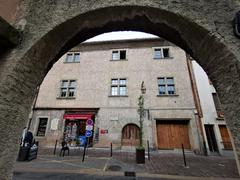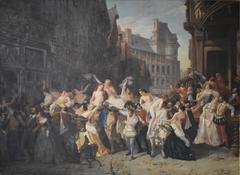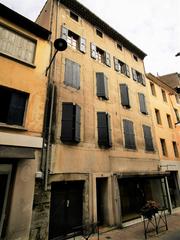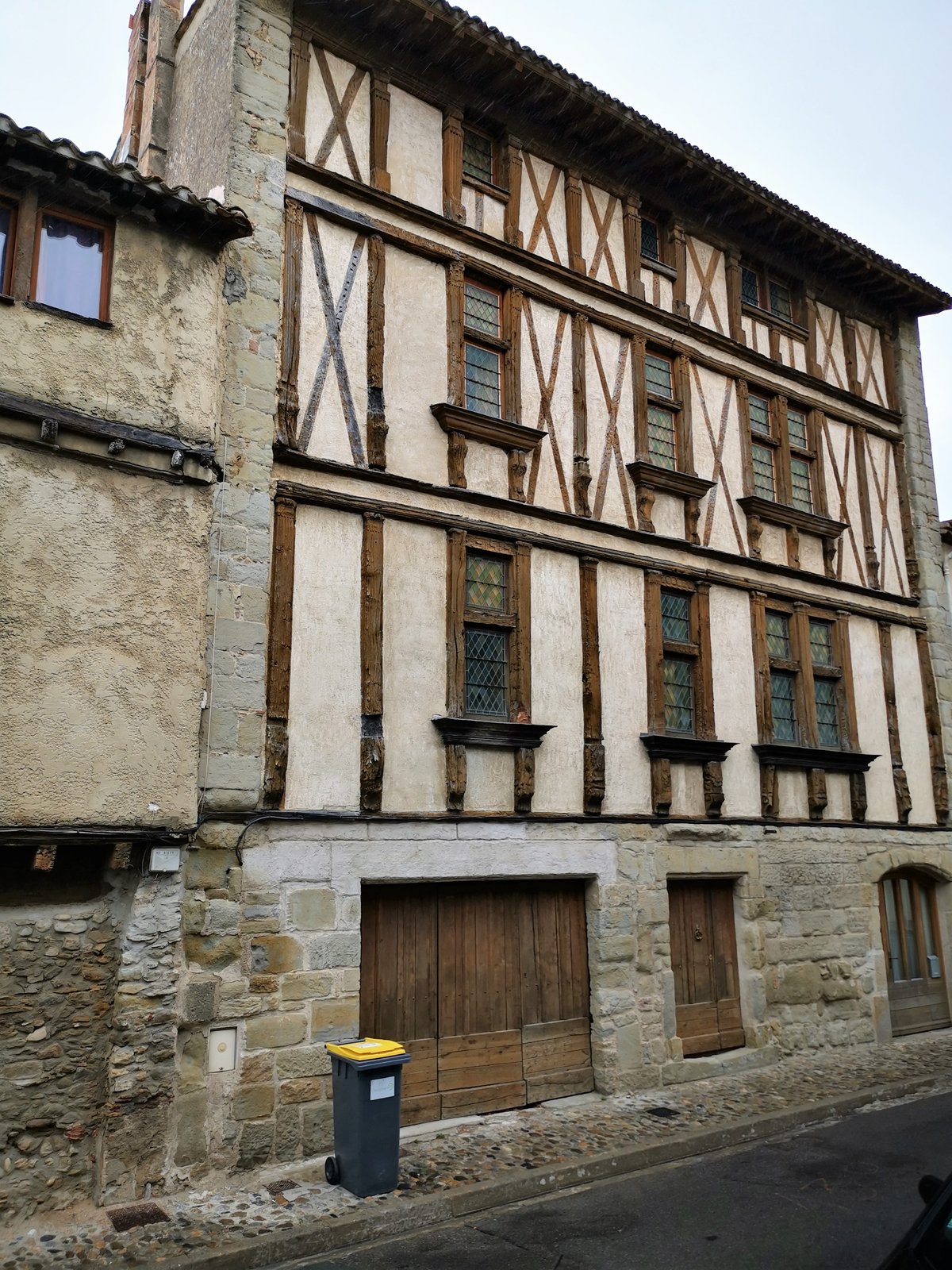
House of Montmorency: Visiting Hours, Tickets, and Historical Sites in Carcassonne, France
Date: 14/06/2025
Introduction: The House of Montmorency and Its Cultural Significance
Carcassonne, a UNESCO World Heritage Site in southern France’s Occitanie region, is renowned as one of Europe’s best-preserved medieval cities. Its double-walled fortifications, 52 towers, and atmospheric old town have witnessed centuries of political intrigue, military innovation, and cultural evolution. Central to this story is the House of Montmorency (Bastion de Montmorency), linked to one of France’s oldest and most influential noble families.
The Montmorency family’s involvement in Carcassonne, particularly from the 16th century, shaped the city’s administration, defense, and integration into the French crown. Their architectural legacy—including the Renaissance-era Bastion de Montmorency—symbolizes Carcassonne’s resilience and strategic importance during periods such as the French Wars of Religion.
This comprehensive guide will introduce you to the House of Montmorency and other key historical sites in Carcassonne, provide essential visitor information (hours, tickets, accessibility, tours), and offer practical tips for making the most of your journey into this medieval masterpiece.
For further details, consult official tourism resources (carcassonnecastle.com), the Monumentum heritage registry (monumentum.fr), and local guides (carcassonne.org).
Historical Overview of Carcassonne and the House of Montmorency
Early Foundations
Carcassonne’s history extends over 2,500 years, beginning with Celtic and Roman fortifications that leveraged the city’s commanding position over the River Aude (carcassonnecastle.com). The Romans established the first stone ramparts, parts of which still underlie the medieval walls (remparts-carcassonne.fr).
Medieval Ascendancy
In the 12th century, the Trencavel family ruled Carcassonne, expanding its defenses and fostering a climate of religious tolerance that made the city a haven for Cathars. This tolerance led to Carcassonne’s siege and royal takeover during the 1209 Albigensian Crusade, which ultimately brought the city under direct French crown control (occitanietravel.com; midi-france.info).
Royal Expansion and the Montmorency Legacy
After the crusade, Carcassonne’s fortifications were expanded, including the construction of its iconic double walls in 1226. The Montmorency family—prominent nobles from northern France—became closely associated with Carcassonne as royal appointees. Their tenure included overseeing the city’s defenses and administration, particularly during times of regional unrest (carcassonnecastle.com).
Renaissance Innovations: The Bastion de Montmorency
The 16th-century Bastion de Montmorency exemplifies Carcassonne’s adaptation to the age of gunpowder. Built in the 1540s and named for Henri de Montmorency, it played a strategic role during the French Wars of Religion, serving as a Catholic stronghold and artillery platform (monumentum.fr; carcassonne.org).
Decline and Restoration
Following the Treaty of the Pyrenees in 1659, Carcassonne’s military significance declined and its fortifications fell into disrepair. By the 19th century, demolition threatened the city until Eugène Viollet-le-Duc’s renowned restoration secured its status as a heritage site (remparts-carcassonne.fr).
Exploring Carcassonne: Key Historical Sites
The Cité de Carcassonne
- Double-walled ramparts & 52 towers: The city’s most iconic feature, open to visitors for panoramic walks.
- Château Comtal (Count’s Castle): The administrative and residential heart, with exhibits on Carcassonne’s history (carcassonnecastle.com).
- Basilica of Saints Nazarius and Celsus: A blend of Romanesque and Gothic architecture, home to medieval stained glass (boardgameencyclopedia.com).
Bastide Saint-Louis
Founded by King Louis IX in 1247, this “new town” lies across the river from the medieval city. Its grid of elegant streets, markets, and 18th-century architecture provide a contrast to the fortified cité (midi-france.info).
Bastion de Montmorency
A Renaissance-era artillery bastion, now part of the lower town’s urban fabric and classified as a Monument Historique. Its robust design and history as a stronghold during the Wars of Religion make it a unique landmark (monumentum.fr).
Practical Visitor Information
Opening Hours and Tickets
- Cité de Carcassonne & Château Comtal: Typically open daily, 9:30 AM–6:00 PM (longer in summer). Check the official website for updates.
- Tickets: Adult tickets are usually around €9, with discounts for children, students, and seniors. Combined tickets cover the cité and Château Comtal. Buy online for skip-the-line access.
- Bastion de Montmorency: Access is limited due to its location on private property (clinic grounds). It is generally open to the public only during special events such as the European Heritage Days. Entry is typically free on these occasions (monumentum.fr).
Accessibility
- Cité & Château Comtal: Partially accessible; cobblestones and stairs may pose challenges. Ramps and accessible routes are available in some areas.
- Bastion de Montmorency: The exterior is accessible via nearby boulevards, but interior access is restricted (carcassonne.org).
Guided Tours and Special Events
- Guided tours (in multiple languages) are recommended for in-depth historical context. Audio guides and mobile apps are also available.
- Annual events: The Carcassonne Festival (July) and Bastille Day fireworks bring the city to life, as do seasonal markets and reenactments.
Tips for Your Visit
- Best times to visit: Spring and early autumn (mild weather, fewer crowds). Early morning and late afternoon offer quieter experiences and better photography light (thecrazytourist.com).
- Dress appropriately: Comfortable shoes are essential for cobblestones and ramparts.
- Dining: Sample cassoulet and local wines at restaurants within the cité or Bastide Saint-Louis (bonadvisor.com).
- Stay connected: Download the Audiala app for maps and audio guides; follow the official tourism website and social media for updates.
Bastion de Montmorency: Historical and Visitor Guide
Historical Background
Constructed in the 1540s, the Bastion de Montmorency was part of Carcassonne’s response to advances in artillery warfare. Named for Henri de Montmorency, it was a Catholic stronghold during the Wars of Religion, famously firing over 600 cannon shots during a three-day siege in 1590 (carcassonne.org).
Architecture
The bastion features thick, angled stone walls designed to withstand cannon fire, reflecting Renaissance military theory. Its design differs from the cité’s medieval towers, with lower profiles and sloped surfaces (monumentum.fr; mescladis.free.fr).
Visiting Information
- Location: 2 Boulevard Camille Pelletan, at the southeast corner of Bastide Saint-Louis, near the Dôme and Pont Vieux (gpsmycity.com).
- Opening hours: Generally closed to the public, except during events (e.g., European Heritage Days). Confirm access with the Tourist Office.
- Accessibility: The exterior is viewable from public areas; interior visits are rare and may not be suitable for those with mobility challenges.
- Nearby attractions: Pont Vieux (historic bridge), Jardin des Plantes (city garden), Bastide Saint-Louis (laramoneta.com).
House of Montmorency: Visitor Essentials
Location and Access
Situated within Carcassonne’s pedestrian-only cité, the House of Montmorency is accessible through the main gates, notably the Narbonnaise Gate. The city is reachable by train, car, or air, and the cité is a 20–30 minute walk from the train station (bonadvisor.com).
Tickets and Entry
- Entry to the cité: Free.
- House of Montmorency, Château Comtal, and other sites: Entry fees typically under €10 for adults, with discounts for children, students, and seniors. Purchase tickets in advance, particularly during peak months (francetraveltips.com).
- Guided tours: Available in multiple languages (tourisme-carcassonne.fr).
Accessibility
Historic houses and ramparts may have limited wheelchair access due to stairs and narrow passageways. Check with the Tourist Office for details.
Visiting Tips
- Allow 1–2 hours for the House of Montmorency, or a half to full day for the entire cité.
- Photography: Permitted in most areas, but avoid flash or tripods where restricted.
- Amenities: Restrooms and cafés are available in the cité; some historic sites have limited facilities.
- Souvenirs: Gift shops and artisan boutiques offer local crafts and regional products.
Dining and Accommodation
- Restaurants: Cassoulet and other regional dishes are local specialties (bonadvisor.com).
- Hotels: Options range from boutique hotels in the cité to affordable stays in the Bastide Saint-Louis (francetraveltips.com). Early booking is advised in high season.
Frequently Asked Questions (FAQ)
Q: What are Carcassonne’s opening hours?
A: Typically 9:30 AM–6:00 PM; confirm on the official website for seasonal changes.
Q: How do I buy tickets?
A: Online via the official site or at the entrance. Advance purchase is recommended.
Q: Is the Bastion de Montmorency open to the public?
A: Only during special events, such as European Heritage Days. Otherwise, the site is not regularly accessible (monumentum.fr).
Q: Are guided tours offered in English?
A: Yes, tours are available in multiple languages.
Q: Is Carcassonne wheelchair accessible?
A: Parts of the cité and some sites are accessible; others, especially historic interiors, may have limited access.
Final Tips and How to Stay Updated
- Always check the Tourist Office or relevant official websites before your visit for up-to-date hours, ticketing, and event information.
- Download the Audiala app for audio guides and maps.
- Follow Carcassonne’s official tourism channels for announcements on festivals, special openings, and travel alerts.
References and Further Resources
- Carcassonne Castle
- Remparts Carcassonne
- Carcassonne.org: Maison dite de Montmorency
- Monumentum: Bastion de Montmorency
- OccitanieTravel.com
- BonAdvisor
- BoardGameEncyclopedia.com
- Tourisme-Carcassonne.fr
- Mescladis: Bastions of Carcassonne
- Sacavoyage: Pont Vieux and Attractions
- France Travel Tips
- The Crazy Tourist
- GPSmyCity: Bastion de Montmorency
- La Ramoneta: Bastide Saint-Louis
Carcassonne’s House of Montmorency and its interconnected sites offer a vivid journey through France’s medieval and Renaissance past. Careful planning—checking hours, securing tickets, and considering guided tours—ensures a rewarding experience in this living monument to history, architecture, and culture.
